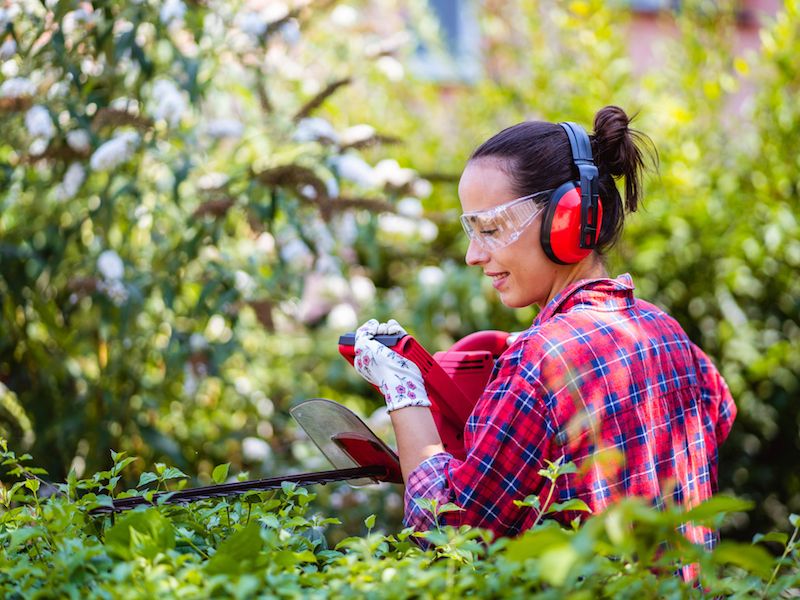
Eating right and protecting your hearing have some parallels. It sounds good, but not many of us have a very good idea of where to start. If there aren’t any noticeable noise risks and you don’t think your environment is especially loud, this is especially true. But everyday life can stress your ears and your senses, so your auditory acuity can be maintained if you apply these tips.
The more you can do to delay the deterioration of your hearing, the longer you’ll be able to enjoy the sounds around you.
Tip 1: Wearable Ear Protection
The most basic and sensible way that you can safeguard your ears is to protect your ears. This means taking basic steps to reduce the amount of loud and damaging noises you’re subjected to.
For many people, this will mean using ear protection when it’s required. Two basic forms of protection are available:
- Ear Muffs, which are put over the ears.
- Ear Plugs, which are put in the ear canal.
Neither form of hearing protection is inherently better than the other. There are benefits to each type. What’s significant is that you find some hearing protection that you feel comfortable wearing.
Tip 2: Be Aware When Sound Becomes Dangerous
But how can you tell when to use hearing protection? Noise that is painful is usually regarded as harmful. But honestly, noises can start to damage your hearing at a much lower volume than you might anticipate. The sounds of traffic, for example, are loud enough to begin injuring your hearing after only a couple of hours. A vital step in safeguarding your hearing, then, is knowing when sound becomes dangerous.
The following threshold is when sound becomes hazardous:
- 95-100 dB: This is the typical volume of your earbuds or the level of farm equipment. After about 15-20 minutes this level of sound becomes dangerous.
- 85 decibels (dB): After around two hours this volume of sound is damaging.Your hairdryer or a busy city street are both scenarios where you will find this level of sound.
- Over 100 dB: In this situation, you can damage your hearing very rapidly. Damage is done in around thirty seconds with anything above this threshold. Jet engines and rock concerts, for instance, can damage your ears in around thirty seconds.
Tip 3: Your Phone Can Become a Sound Meter
Now that we have a basic understanding of what volume of noise might be hazardous, we can take some steps to make sure we minimize our exposure. But in real life, it can be difficult trying to measure what is too loud and what isn’t.
Your smartphone can now be used as a handy little tool. Sound meter apps exist for every type of smartphone.
Having a live sound meter with you will help you evaluate everything you’re hearing in decibels, so you’ll have a much better understanding of what dangerous levels actually sound like in your everyday life.
Tip 4: Be Mindful of Your Volume Settings
Most people these days listen to music using their phone or smart device, and they normally use earbuds while they do it. This creates a dangerous situation for your hearing. Over years of use, earbuds set to a substantially high level can cause considerable injury to your ears.
That’s why safeguarding your ears means keeping a sharp eye on your volume control. You should never increase the volume to drown out noises elsewhere. in order to make sure that volume doesn’t get too loud, we suggest using volume settings or app settings.
Earbud use can become something of a negative feedback loop if your hearing starts to wane; in order to compensate for your declining hearing, you may find yourself constantly increasing the volume of your earbuds, and in the process doing more harm to your ears.
Tip 5: Get Your Hearing Checked
You might think that having a hearing exam is something you do only when your hearing begins to wane. Without a standard to compare results to, it’s not always easy to identify a problem in your ears.
Creating data that can be used for both diagnostic purposes and for treatment can best be achieved by scheduling a hearing exam and screening. This will give you some extra context for future hearing choices and ear protection.
Keep an Eye on Your Hearing
In a perfect world, protecting your ears would be something you could do continuously without any difficulty. But challenges are will always be there. So protect your hearing whenever you can, as often as you can. Also, get regular hearing exams. Hopefully, these guidelines will give you a good start.